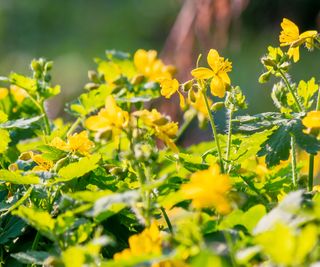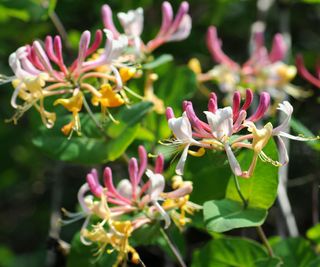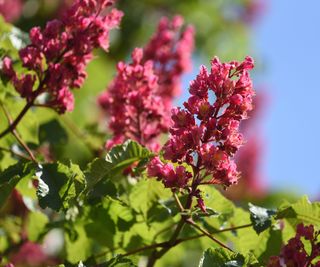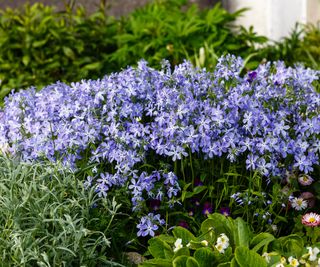Flowering native shade plants in your garden help to support biodiversity, a key element in a sustainable garden. Native shrubs for shade areas provide habitat, sanctuary and often food for many species, and blooming native plants for shade promote a healthy population of pollinators. And the best news is they are often low maintenance shade plants requiring little regular maintenance. In fact, the choices can be overwhelming – so here are six of my favorite native plants for shade.
Choosing Stunning Flowering Native Shade Plants
In shaded areas, it’s often difficult to establish healthy plant populations unless they are native to the area. Native shade perennials have acclimated to local conditions over thousands of years, so are more likely to survive those conditions. In fact if biodiversity is your goal, you should incorporate at least 80% native plantings to the area. Try these knockout flowering natives for a stunningly sustainable plot.
1. Phlox
(Image credit: Olga Bungova / Getty Images)
One of my favorite perennials is phlox of which I have several varieties, some requiring full sun and one called Blue Moon which is partial to full shade. Blue Moon is a lovely, low-growing, spring blooming perennial native for USDA zones 3-8. It is perfect for the woodland garden.
For anyone keen on growing phlox, this creeping, semi-evergreen is lightly fragrant and looks lovely combined with spring flowering bulbs as an underplanting. It is one of the best native plants for dry shade, requires little maintenance and can be divided to form new plants every three-five years. A pretty native that attracts butterflies.
2. Virginia Creeper

(Image credit: Massimiliano Finzi / Getty Images)
In my neck of the woods, Virginia creeper (Parthenocissus quinquefolia) can be seen scrambling up telephone poles, fences and any other vertical structure. It is so prolific in my 6b zone that it borders on being invasive and yet is the perfect low maintenance, rapidly growing, deciduous vine that provides practically instantaneous cover and privacy in shade to full sun areas.
Native to North America and Mexico, Virginia creeper is a flowering perennial vine in the grape, Vitaceae, family. In the wild, this vine can grow up to 100 feet (30m), but don’t panic, it does quite well with aggressive pruning to retard its size. Its leaves are made up of five coarsely toothed leaflets with a pointed tip accented by blue berries. In the fall, the foliage bursts into vivid hues of red, mauve and purple.
3. Celandine Poppy

(Image credit: Mike Pellinni / Getty Images)
Wood poppy or celandine poppy (Stylophorum diphyllum) is native to the moist soils of deciduous woods and looks beautiful along a shaded path or amongst a wildflower garden. This wild poppy loves partial shade and moist soil, making it an excellent native choice for stream beds or shaded landscape water features. This plant emerges in the early spring in a tangle of lobed, dark green foliage accented by silver, followed by showy clusters of yellow blooms by mid-late April.
This herbaceous native shade perennial can be grown in USDA zones 4-9. Excellent groundcover plants, wood poppies are also attractive cover for native wildlife. Celandine poppy aggressively self-sows, so a perfect placement is an area that needs full coverage with plenty of room.
4. Fringed Bleeding Heart

(Image credit: Joshua McCullough / PhytoPhoto / Getty Images)
Similar to the Pacific bleeding heart, fringed bleeding heart is native to the Eastern US. Both have similar heart shaped, pink blooms and wispy, fern-like, gray-green foliage but this one has narrower flowers with curved outer petals. Dicentra eximia is a deciduous perennial and blooms from early spring through the first frost. A bushy plant, it is quick to send up leaves in the spring and matures to a height of 1-2 feet (30-60cm) and three feet (just under a meter) across. It spreads slowly by rhizomes.
This plant enjoys moist, well-drained, soil in filtered shade. Combine it with other native shade plants or use it as a mixed border plant. It’s especially showy when planted en masse. Grow in USDA zones 3-9.
5. Bush Honeysuckle

(Image credit: Hsvrs / Getty Images)
Bush honeysuckle are low-maintenance, suckering native plants, good for soil stabilization and erosion control. They also work well in mass plantings or as hedges. This deciduous shrub can be grown in USDA zones 3-7 in sun or shade, is unfussy about soil, and is drought tolerant at maturity. There are two types of honeysuckle available to the home gardener keen on natives – Northern bush honeysuckle and Southern bush honeysuckle.
Bush honeysuckle has a mounded habit and grows to 3-5 feet (1-1.5m) in height and the same across. The first flush of leaves in the fall are red, becoming green then bronze. Tubular blooms form in clusters from June to September, which are extremely attractive to pollinators. After flowering, small seed capsules appear from July to September. In the fall, the Northern bush foliage stuns with hues of red, yellow, orange and purple, making it one of the most vivid native shrubs for shade.
6. Red Buckeye

(Image credit: Albert Fertl / Getty Images)
The red buckeye (Aesculus pavia) or firecracker plant is one hot native tree. It requires dappled shade to partial sun. The more sun the plant receives, the better it will bloom. And the blooms are magnificent! This deciduous shrub blooms with erect red panicles in April and May to beckon hummingbirds and other pollinators. Red buckeye grows to a height of 12-15 feet (4-4.5m) and the same across. It prefers rich, moist and well-draining soil, and can be grown in USDA zones 4-9A.
While the spring show of crimson blooms is spectacular, later development and fall of the buckeyes is less so. Depending on where your shrub is grown, they need to be cleaned up and they are toxic to most living creatures, including humans. Still, buckeyes are said to bring good luck if you carry them on your person, much like a four leaf clover.
This article features products available from third party vendors on the Gardening Know How Shop.




